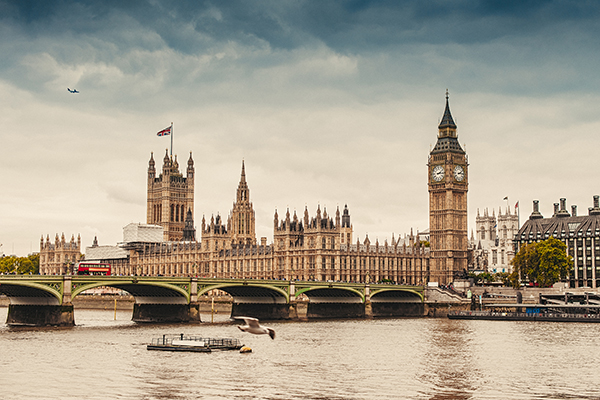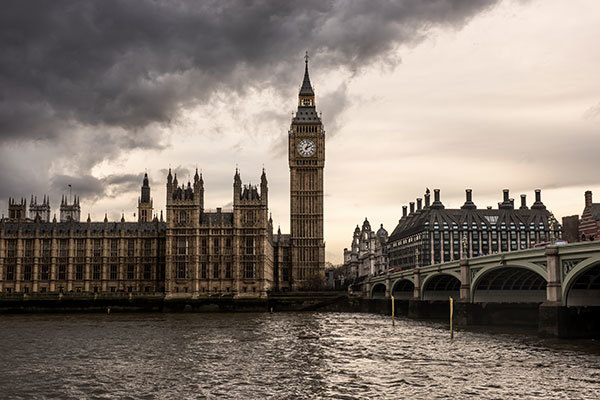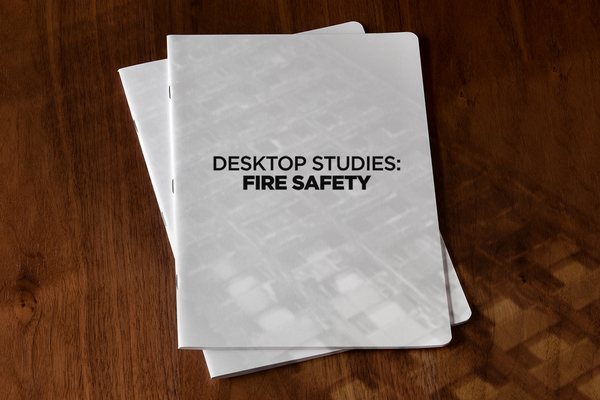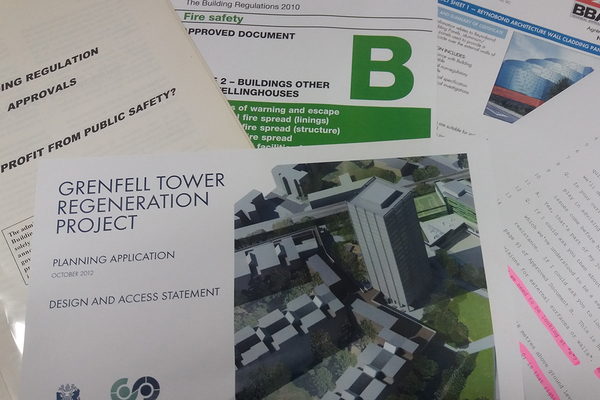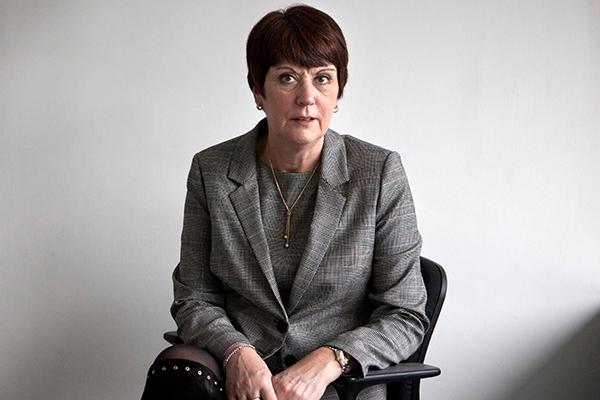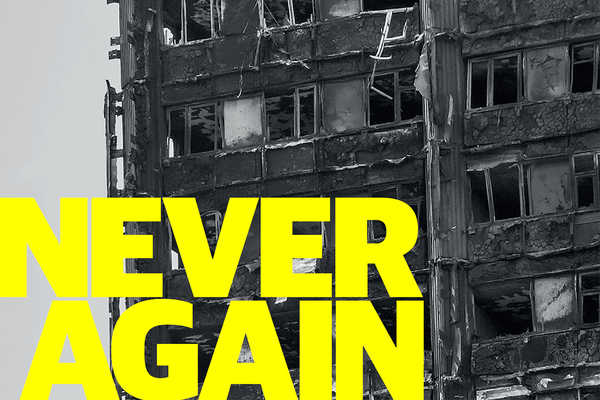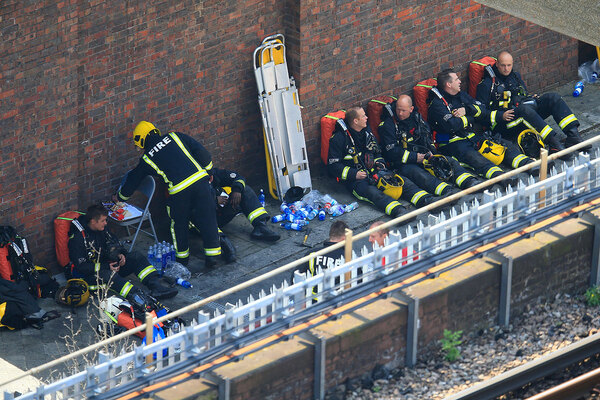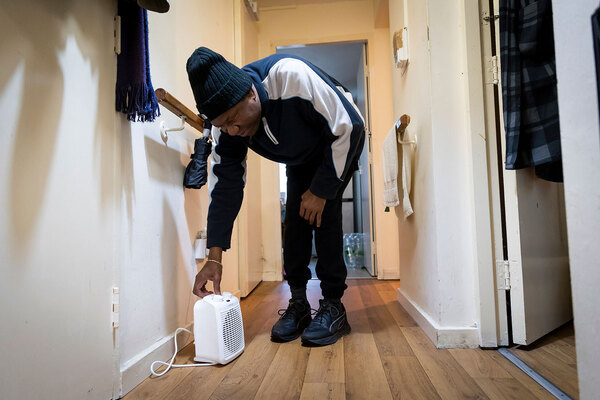You are viewing 1 of your 1 free articles
Industry guidance contradicts government on use of ‘desktop studies’
Industry guidance contradicts Sajid Javid’s claim to MPs last week that ‘desktop studies’ are permitted by the government’s rules.
Mr Javid last week responded to a letter from 50 cross-party MPs criticising his plans to include desktop studies in Approved Document B – the official guidance on building regulations.
The housing secretary told the MPs that it was “categorically not the case” that current guidance rules out the practice of assessing combustible cladding systems based on test results of different combinations of material.
However guidance on regulations by cladding manufacturer Booth Muirie from 2016 describes the practice of desktop studies as “not supported by [Approved Document] B”.
A letter written by Labour’s David Lammy and signed by 50 MPs from across the political spectrum had hit out at the government’s plan to revise the guidance to permit desktop studies in restricted circumstances.
The letter said: “We are deeply concerned that changes to Approved Document B permitting the use of ‘desktop studies’ for the use of combustible materials on high-rise buildings would represent a significant and dangerous weakening of fire safety regulations.”
In a reply to the letter, seen by Inside Housing, Mr Javid said the use of desktop studies has been a “long-established part of the system for classifying the fire performance of construction products and systems, and not just in the UK”.
However according to ‘Technical Guidance Note One’ published in March 2016 by Booth Muirie, a subsidiary of insulation manufacturer Kingspan, the practice is not supported by the official guidance but only by subsidiary notes published by the Building Control Alliance in 2014.
It is understood the government stands by Mr Javid’s statement.
A spokesperson for Kingspan said: “We welcome the secretary of state’s recent comments, which give useful clarity on the application of the regulations which we will reflect in any future updates. We also look forward to the outcome of the government’s review of building regulations, which we hope will provide the reform and robustness that all agree are required.”
Kingspan has lobbied for the continued use of desktop studies, with more restrictions than is currently the case.
Dame Judith Hackitt’s independent review of building regulations recommended that the use of desktop studies should continue but be “significantly restricted”.
Click here to read our in-depth investigation into building regulations
There is no specific reference to ‘desktop studies’ in Approved Document B, but the government claims paragraph 1(b) in Appendix A is drafted loosely enough to allow their use.
This section reads: “Much of the guidance in this document is given in terms of performance in relation to British or European standards. In such cases the material, product or structure should... have been assessed from test evidence against appropriate standards, or by using relevant design guides, as meeting that performance.”
People carrying out desktop studies will look at previous full-scale fire safety test results of certain materials to make a decision on whether the material is safe.
The use of desktop studies was codified by Building Control Alliance guidance in 2014 as a “third option” for showing compliance with Approved Document B.
But experts, including the Royal Institute of British Architects, have warned against their use, with the National Fire Chiefs Council stating that trying to determine the fire resistance of a building material through a desktop study “may lead to errors or a reduction in safety margins”.
What are desktop studies, and why are people concerned?
Building regulations say cladding systems which contain combustible insulation must be shown to meet specific standards based on “full scale test data”
A ‘desktop study’ is a means of making an assumption about whether or not a cladding system would meet these standards without actually testing it.
It involves using data from previous tests of the materials in different combinations to make assumptions about how it would perform in a test.
This is not specifically provided for in the current guide to building regulations, but the government believes they are loosely drafted to an extent which makes it permissible. It plans to redraft the guidance to include specific rules on the use of desktop studies for the first time.
The alternatives to a desktop study are full scale testing or not using combustible materials.
People are concerned about the process because it is based on assumption: at least one system cleared through a desktop study has failed a full scale test.
This is important for fire safety because mistakes may mean unsafe cladding systems being cleared for use on tall buildings.
The Hackitt Review
Photo: Tom Pilston/Eyevine
Dame Judith Hackitt’s (above) interim report on building safety, released in December 2017, was scathing about some of the industry’s practices.
Although the full report is not due to be published until later this year, the former Health and Safety Executive chair has already highlighted a culture of cost-cutting and is likely to call for a radical overhaul of current regulations in an interim report.
Dame Hackitt’s key recommendations and conclusions include:
- A call for the simplification of building regulations and guidelines to prevent misapplication
- Clarification of roles and responsibilities in the construction industry
- Giving those who commission, design and construct buildings primary responsibility that they are fit for purpose
- Greater scope for residents to raise concerns
- A formal accreditation system for anyone involved in fire prevention on high-rise blocks
- A stronger enforcement regime backed up with powerful sanctions
Never Again campaign
Inside Housing has launched a campaign to improve fire safety following the Grenfell Tower fire
Never Again: campaign asks
Inside Housing is calling for immediate action to implement the learning from the Lakanal House fire, and a commitment to act – without delay – on learning from the Grenfell Tower tragedy as it becomes available.
LANDLORDS
- Take immediate action to check cladding and external panels on tower blocks and take prompt, appropriate action to remedy any problems
- Update risk assessments using an appropriate, qualified expert.
- Commit to renewing assessments annually and after major repair or cladding work is carried out
- Review and update evacuation policies and ‘stay put’ advice in light of risk assessments, and communicate clearly to residents
GOVERNMENT
- Provide urgent advice on the installation and upkeep of external insulation
- Update and clarify building regulations immediately – with a commitment to update if additional learning emerges at a later date from the Grenfell inquiry
- Fund the retrofitting of sprinkler systems in all tower blocks across the UK (except where there are specific structural reasons not to do so)
We will submit evidence from our research to the Grenfell public inquiry.
The inquiry should look at why opportunities to implement learning that could have prevented the fire were missed, in order to ensure similar opportunities are acted on in the future.
The Paper Trail: The Failure of Building Regulations
Read our in-depth investigation into how building regulations have changed over time and how this may have contributed to the Grenfell Tower fire:

